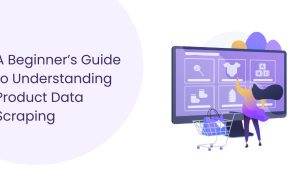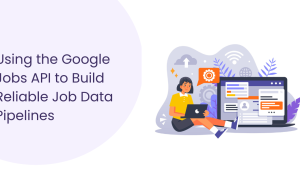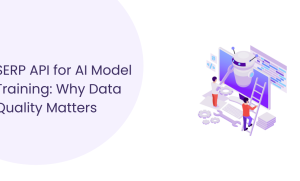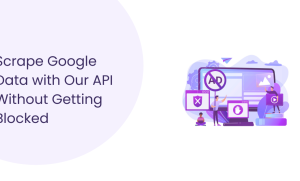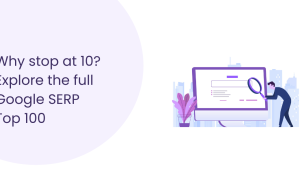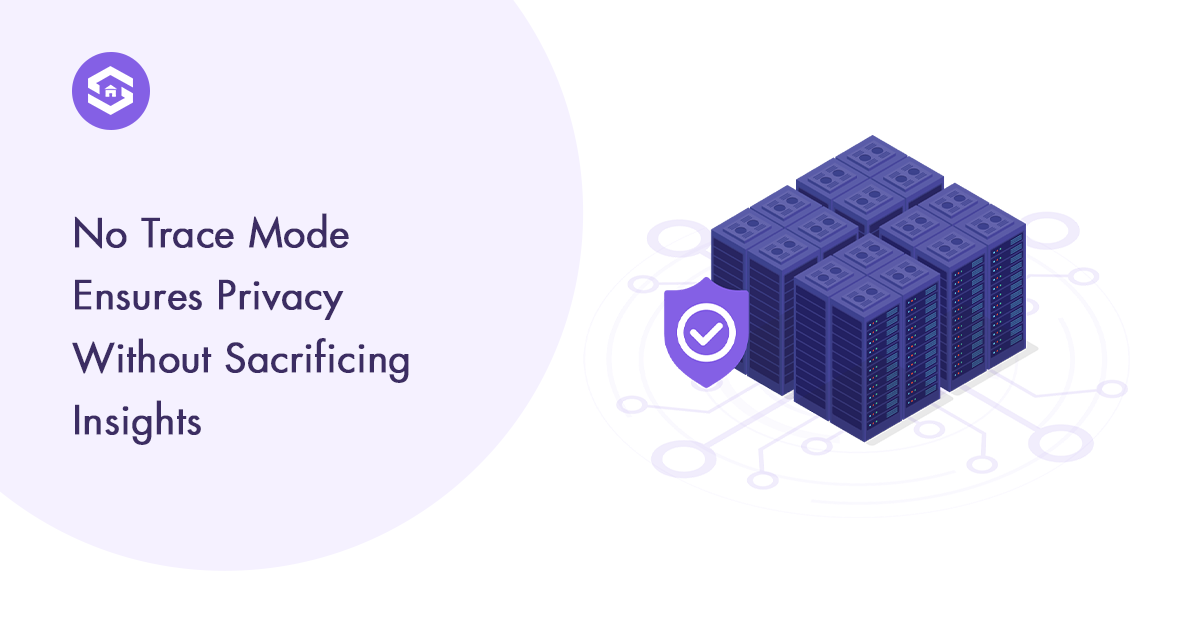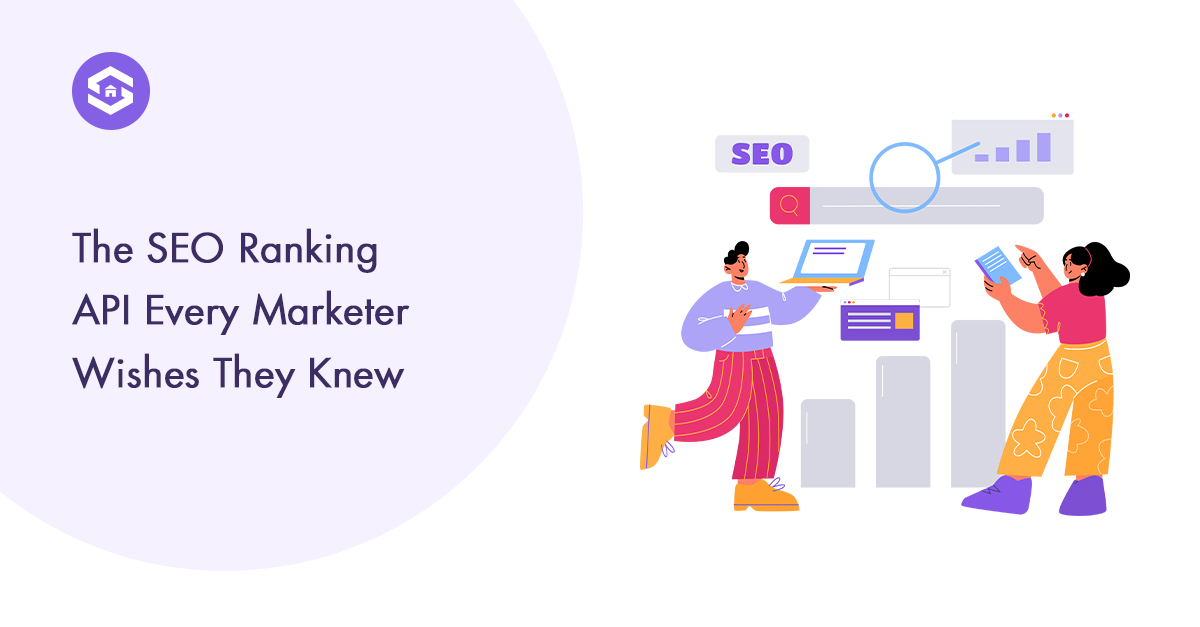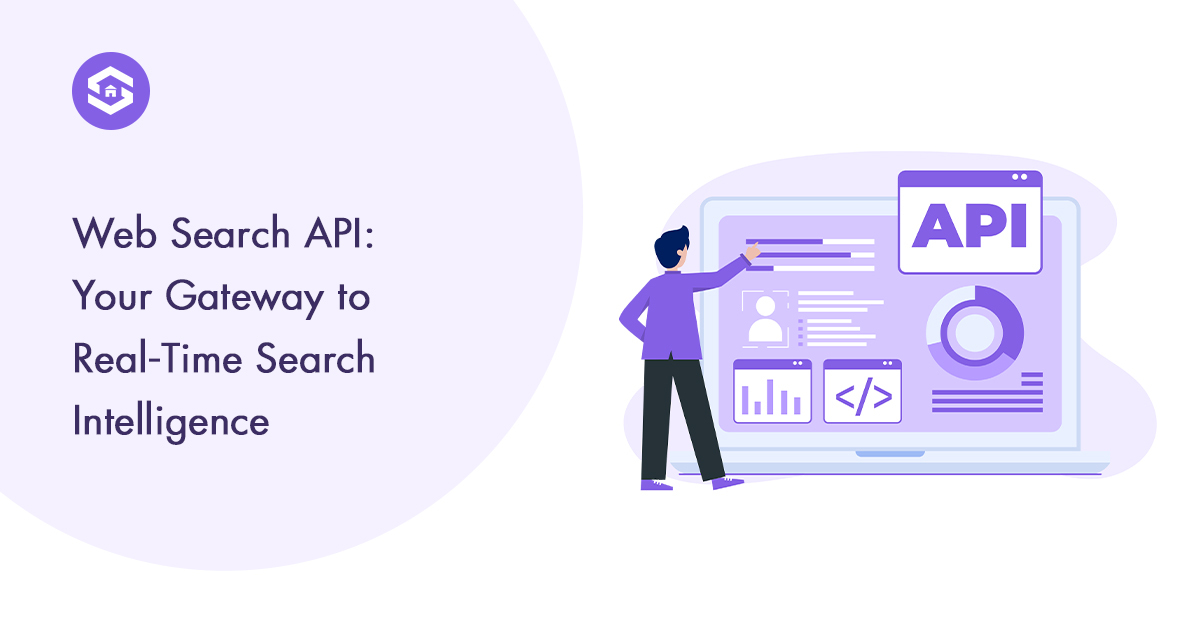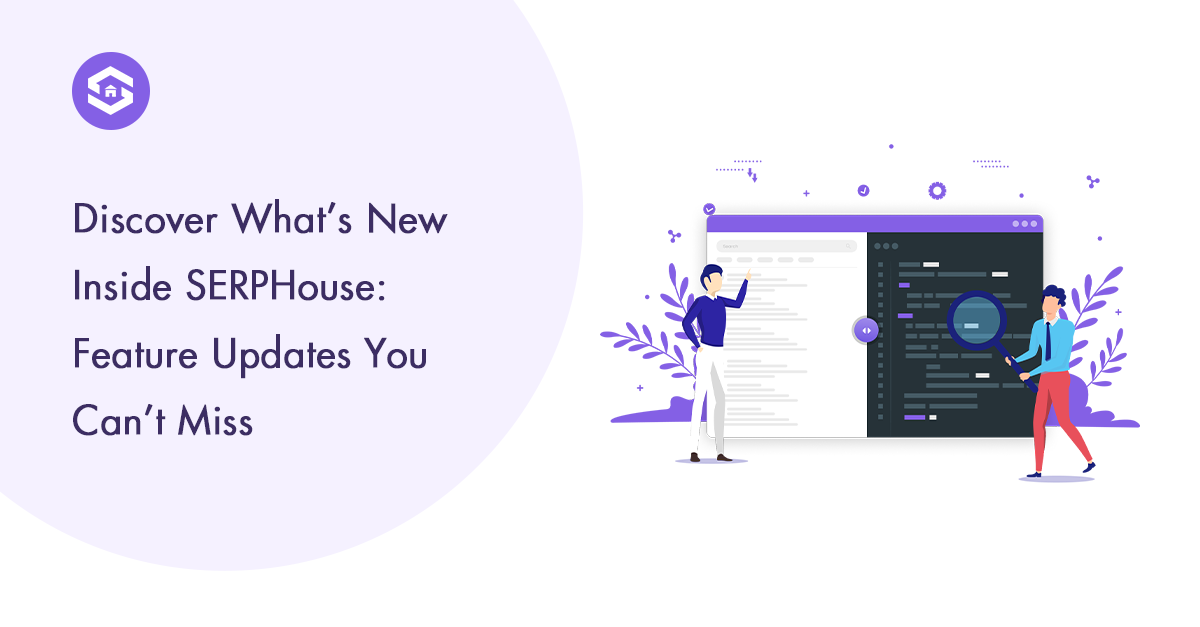Table of Contents
Table of Contents
Localized rank tracking is no longer just a smart move; it’s a need. Today’s search results are not a one-size-fits-all. What one sees in the city of Mumbai may not be as it is only 10 kilometers from a suburb. This is because Google individuals the search results based on the user’s location, intentions, and a variety of real-time signs. If you are not tracking where your company shows in the local search rankings, you are probably missing the most important visitors.
This is where local SEO truly comes into play. It’s not just about showing up in search results — it’s about showing up in the right results for the right people, in the right place. And that means going deeper than national rankings. It means understanding how your site performs across different zip codes, neighborhoods, or cities — something only geo-targeted keywords and local tracking tools can uncover.
The businesses winning in local markets aren’t the ones casting the widest net. They’re the ones that understand their specific, local audience — and they’re using precision data to stay one step ahead.
Common Challenges Businesses Face Without It
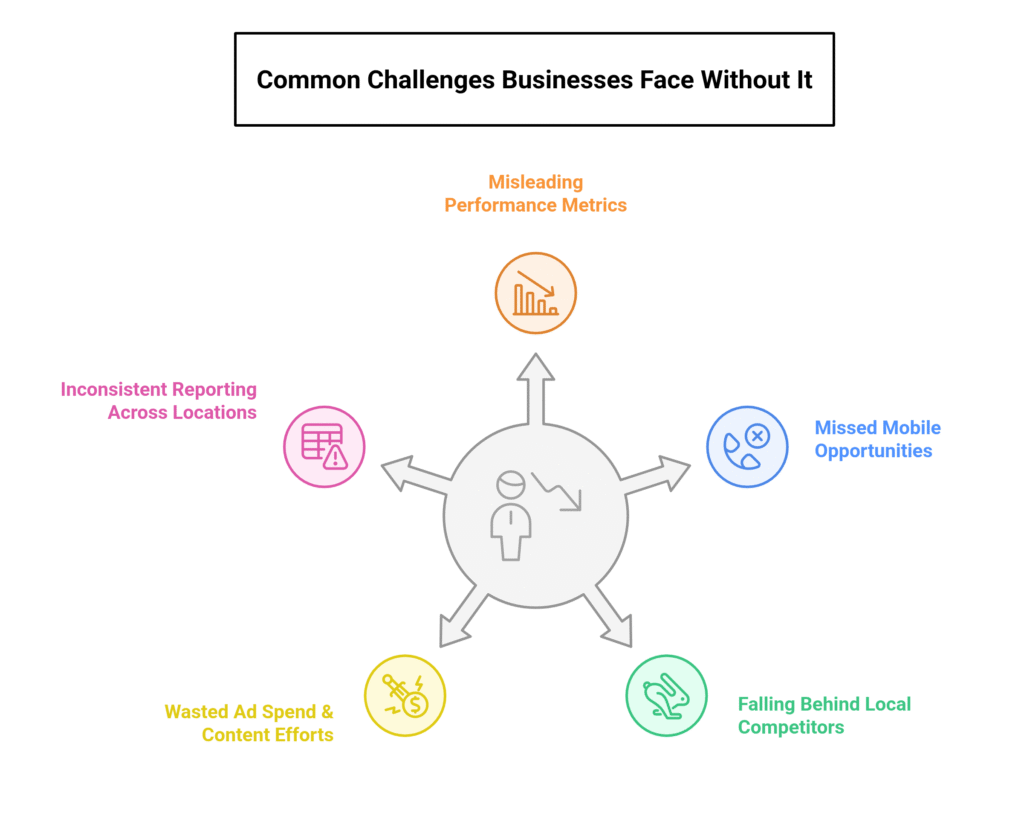
When businesses skip out on localized rank tracking, they’re not just missing data — they’re missing opportunities. Here’s what tends to go wrong:
1. Misleading Performance Metrics
Without tracking rankings on a local level, your reports can look great, but feel completely off. A keyword might rank high nationally, but if it’s buried in your target city’s results, you’re invisible where it counts. That disconnect kills real-world conversions and undermines your local SERP visibility.
2. Missed Mobile Opportunities
Most local searches now happen on mobile — often with urgent intent (“near me,” “open now,” etc.). If you’re not tracking how you rank for those mobile searches in specific areas, you’re losing ground fast. Mobile search accuracy is critical, especially when results shift block by block.
3. Falling Behind Local Competitors
Your competitors are probably using localised monitoring. That way they’re optimizing for hyper-specific locations, testing city-based landing pages, and outranking you before you even know what’s going on. Without location-based SEO insights, you can’t keep up, let alone win.
4. Wasted Ad Spend & Content Efforts
If your content or PPC strategy is based on global or non-local rankings, you are probably spending money to reach the incorrect audience. Localised data allows you to fine-tune where your efforts go, making sure that your message reaches individuals who are nearby and ready to act.
5. Inconsistent Reporting Across Locations
For multi-location brands, this is a nightmare. One location might be thriving while another tanks — but without local tracking, it all gets averaged out. You lose the ability to spot issues early or double down where things are working.
How It Differs from Traditional SERP Tracking
Most people think rank tracking is simple — type in a keyword, check where your site ranks, and you’re done. But that’s only half the picture.
Traditional SERP tracking gives you a broad view. It tells you where you rank nationally or globally, often using data pulled from a generic location or desktop environment. It doesn’t reflect how your business shows up in real-world searches — the kind made by people in specific cities, neighborhoods, or even streets.
Localized rank tracking, on the other hand, is all about precision. It shows your search engine results by location, so you know exactly how visible you are in each area you care about. Whether it’s a single ZIP code or multiple cities across the country, you’re not guessing anymore — you’re tracking geo-specific rankings in real-time.
Another key difference? Intent. Traditional tracking can miss the nuances behind what people are actually looking for. A keyword like “plumber” means something totally different to someone in Delhi vs. someone in the USA. With localized tools, you uncover localized keyword performance, which gives you more relevant insights — and way better conversion potential.
So, while standard SERP tracking is useful for broad overviews, it is insufficient for businesses that rely on local traffic. If your clients are searching by city, neighbourhood, or mobile device, your tracking must reflect that level of detail.
Benefits of Using Localized Rank Tracking Software
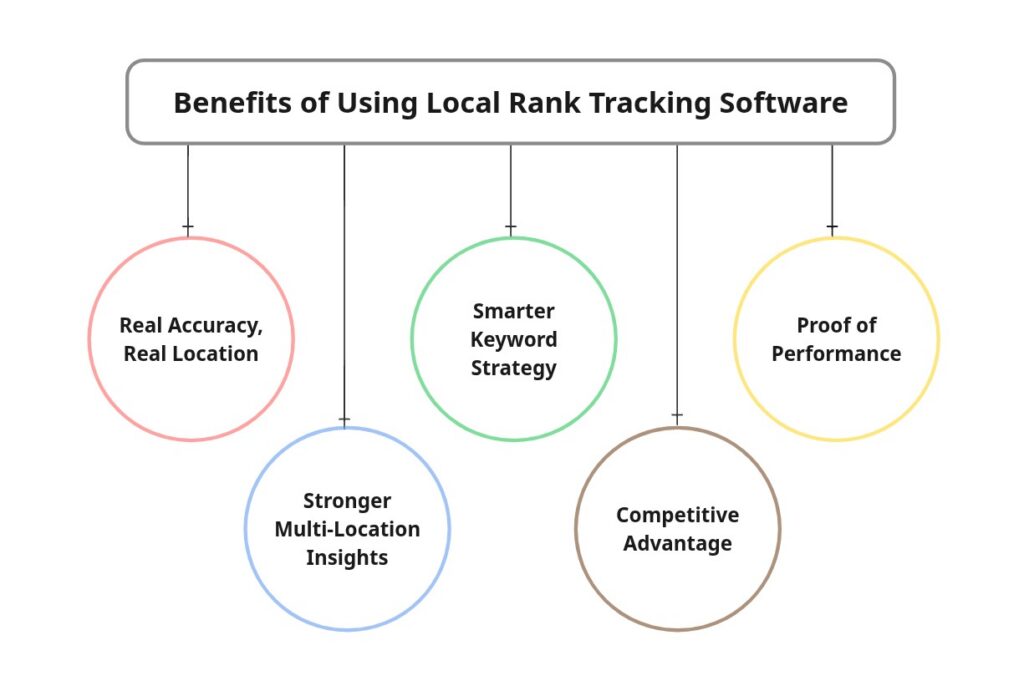
Real Accuracy, Real Locations
Traditional rank tracking doesn’t show you what your customers definitely see. With the nearby tracking tool, you get region-specific seek data that displays real-time results based on exact locations. Whether it’s a metro place or a neighborhood, your insights are grounded in truth, not generic averages.
Stronger Multi-Location Insights
If your business operates in more than one area, tracking each location’s performance is non-negotiable. Tools built for multi-location business rankings let you see which branches are winning in local search — and which ones need help. That means smarter decisions, faster.
Smarter Keyword Strategy
With localized rank tracking, you’re now not simply tracking — you’re refining. You’ll know which keywords depend the most in which markets, and you may build a local SEO strategy that adapts to regional differences in demand, competition, and intent.
Competitive Advantage
You’re not the only one trying to rank locally. Local rank tracking shows you where competitors are outranking you in specific spots — and gives you the edge to take that ground back. This kind of visibility helps you stay proactive instead of reactive.
Proof of Performance
It’s not difficult to justify your SEO investments, while you may show specific profits in the places that matter. Whether it’s reporting to clients or internal teams, localized reports are concrete evidence that your efforts are moving the needle where it counts.
Keyword Intent vs. Location Mismatch
What users type in:
- “Plumber near me” – Toronto, Canada
- “Emergency vet” – Dallas, Texas
- “Best coffee shop” – Manchester, UK
- “Hair stylist open Sunday” – Berlin, Germany
What some businesses still do:
They try to rank for broad terms like “plumber,” “veterinarian,” or “coffee shop” — without tying those to real-world locations or user context. The result? They show up where no one’s looking for them.
This is the classic case of keyword intent clashing with location-specific demand. And in local SEO, that’s a serious traffic leak.
Why It Happens
Businesses often go after search volume instead of relevance. A high-traffic keyword might look appealing on paper — but if it’s not a geo-targeted search term, it won’t match what users are actually searching for in their city or region.
Example: Ranking for “best dentist” in the USA won’t help if the person searching is in Chicago and your office is in Phoenix.
What Fixing It Looks Like
- Instead of: “emergency vet”
- Try: “24-hour vet in Toronto”
- Instead of: “coffee shop”
- Try: “speciality coffee shop in East London”
This is where local keyword optimization shifts the game. It aligns your content with both intent and location, increasing visibility where and when it matters.
Tracking Local Competitors the Smart Way
Knowing where you rank is important, but knowing where your local SEO competitors rank is what gives you an edge. Most businesses think tracking competitors means checking a few keywords and calling it a day. Smart tracking goes deeper — it’s systematic, location-aware, and built around action, not just observation.
Here’s what smart competitor tracking actually looks like:
1. Compare in the Right Location — Not Globally
Your competitor in Los Angeles isn’t your competitor in Houston. Local rankings are shaped by geography, so your analysis has to match. Using SERP analysis tools with local targeting lets you monitor your real competition, not just who’s ranking nationally, but who’s ranking next door.
2. Track the Keywords That Matter
It’s not about tracking every keyword — it’s about tracking the ones that bring customers through the door. Focus on competitive keyword tracking: look for high-converting terms that competitors rank for in your area but you don’t. That’s your opportunity gap.
3. Watch for Content + Page Shifts
Did a local competitor suddenly outrank you in Berlin or Miami? Look at what changed. Did they launch a city-specific landing page? Add fresh reviews? Optimize their page title? These clues help you reverse-engineer their wins — and adapt fast.
4. Analyze SERP Features They Own
In many cities, local packs, featured snippets, or “People Also Ask” boxes dominate visibility. Check which SERP features your top local competitors are showing up in — and which ones you’re missing. Owning just one can double your visibility overnight.
How to Choose the Right Local Rank Tracker
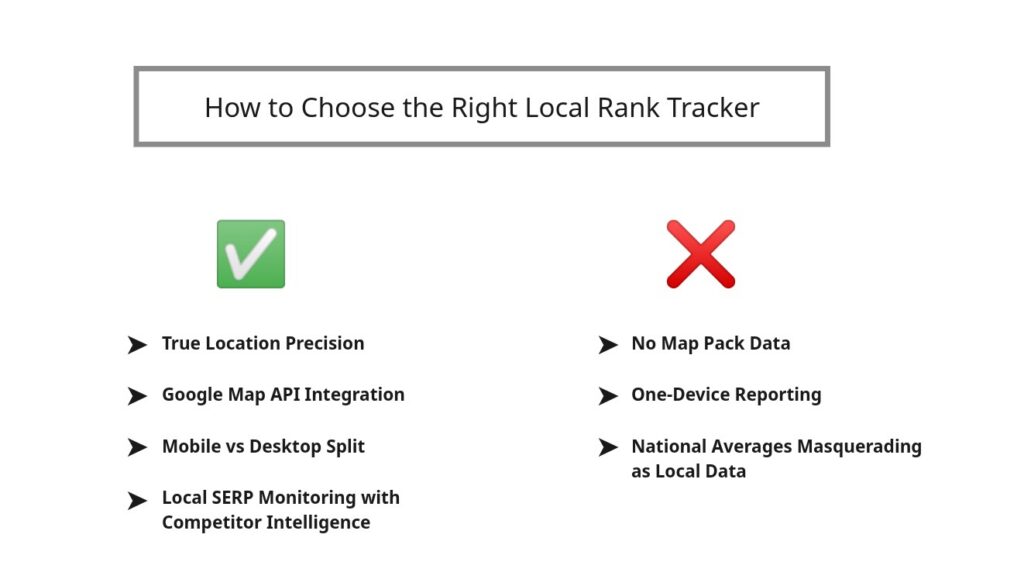
If your rank tracker doesn’t reflect what your customer sees right now in their city, it’s lying to you.
Local search is brutal, real-time, and hyper-specific — and yet, most SEO teams still rely on tools built for national rankings. That’s the gap. And that’s why choosing the right local rank tracker can define whether your strategy actually delivers.
Let’s break it down.
✅ What to Look For — Signals You’ve Found a Real Local Tracker
True Location Precision: City-level isn’t enough. Your tracker should let you check rankings by ZIP code, radius, or GPS coordinates. Anything less, and you’re optimizing for a ghost audience.
Google Map API Integration: If it doesn’t tap directly into Google Maps data, walk away. The map pack is where the clicks happen, and only tools built on the Google Map API can show you where you actually show up.
Mobile vs Desktop Split: Your rankings can shift dramatically depending on the device. You need tools that separate and compare mobile vs desktop ranking, so you’re not building mobile content based on desktop data.
Local SERP Monitoring with Competitor Intelligence: Your tool should track not just your performance, but who’s beating you in every specific location. Tools with built-in local SERP monitoring and competitor alerts help you react before your visibility drops.
❌ What to Avoid — Red Flags That Waste Your Time & Budget
National Averages Masquerading as Local Data: If a tool gives you one ranking per keyword with no mention of where it came from, it’s not local. It’s guesswork.
No Map Pack Data: Showing up on Page 1 doesn’t matter if you’re not in the map pack. If the tool ignores map results, you’re ignoring 40%+ of local search traffic.
One-Device Reporting: A tracker that only gives desktop data is outdated — most local searches happen on mobile. And those SERPs? Completely different.
How Google Personalizes Local Results
Ever wondered why two people searching for the same thing get totally different results? That’s not a glitch. That’s Google working exactly as intended.
Local search results are personalized by design, and once you understand how they work, localized rank tracking will no longer feel optional — it becomes essential. You’ll never look at rank tracking the same way again once you see how much personalization impacts visibility.
It Starts with Location — Down to the Street
Google knows where you are. Not just the city, but often the neighborhood or block — thanks to user location data from mobile devices, IP addresses, GPS, and even Wi-Fi signals. If someone in downtown Chicago searches “best pizza,” Google won’t show them results from the suburbs — unless the intent suggests they’re willing to travel.
What this means: your business might rank #3 in one zip code, and not even show up in the next.
Search History Shapes Personalized SERP Results
Google’s algorithm adapts based on what you’ve clicked before. If a user frequently visits vegan websites, searches for eco-friendly businesses, or favours certain review platforms, Google uses that behavior to reorder results. That’s how two users standing side-by-side can still get different rankings for the same keyword — it’s a personalized SERP, not a static one.
What this means: ranking positions aren’t fixed — they flex per user.
Google Local Search Algorithm Is Context-Aware
It’s not just what’s typed into the search bar. Google considers intent signals like:
- What time of day it is (e.g., “open now” prioritization)
- The type of device being used
- Whether the searcher is in motion (e.g., walking or driving)
All of this feeds into the Google local search algorithm, which constantly recalibrates which businesses to show — and in what order.
What this means: you can’t rely on one static ranking snapshot. You need tools and strategies that account for movement, intent, and local real-time context.
Conclusion
Local SEO isn’t only a digital tactic anymore — it’s an aggressive necessity. From understanding how Google personalizes results to avoiding the most common optimization mistakes, everything points to 1 reality: if you’re not tracking what’s occurring locally, you’re lacking the real story.
That’s why localized rank tracking is more than only a clever move — it’s the foundation for visibility, relevance, and results. It offers you the readability to act, the facts to compete, and the threshold to win in every market you serve.
Whether you manage one location or a hundred, now’s the time to prevent guessing and start tracking what matters — your local effect.



